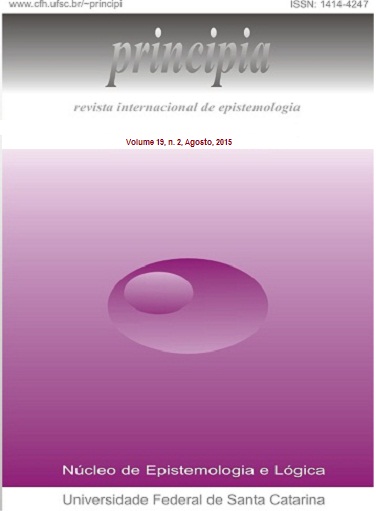Natureza do espaço em Leibniz e a correspondência Leibniz-Clarke
DOI:
https://doi.org/10.5007/1808-1711.2015v19n2p297Resumen
Estudamos a concepção leibniziana de espaço a partir de uma análise dos argumentos desenvolvidos ao longo da correspondência Leibniz-Clarke. Este estudo debruça-se diretamente sobre a correspondência originalmente publicada por Clarke, em 1717, e republicada por H. G. Alexander, em 1956. O objetivo central consiste em mostrar como é possível identificar que Leibniz sustentava três concepções distintas de espaço, todas elas interconectadas e embasadas no princípio de harmonia preestabelecida. Essas três concepções antecipam ideias que foram, ao menos parcialmente, retomadas dentro de perspectivas modernas da física e de sua filosofia. Os principais pontos discutidos são: (i) a contenda contra o atomismo e o espaço absoluto newtonianos; (ii) as implicações ontológicas e físicas dos princípios metafísicos leibnizianos; (iii) o problema da simetria; (iv) a identificação do espaço como propriedade real de extensão; (v) a concepção de espaço relativo como idealidade e (vi) a emergência da concepção relacional/realística de espaço.
Descargas
Publicado
Número
Sección
Licencia

Principia http://www.periodicos.ufsc.br/index.php/principia/index is licenced under a Creative Commons - Atribuição-Uso Não-Comercial-Não a obras derivadas 3.0 Unported.
Base available in www.periodicos.ufsc.br.



